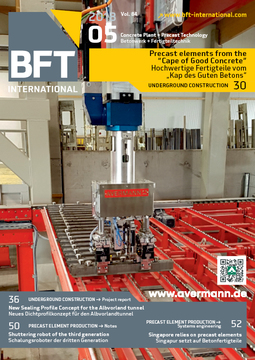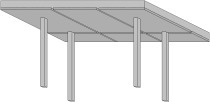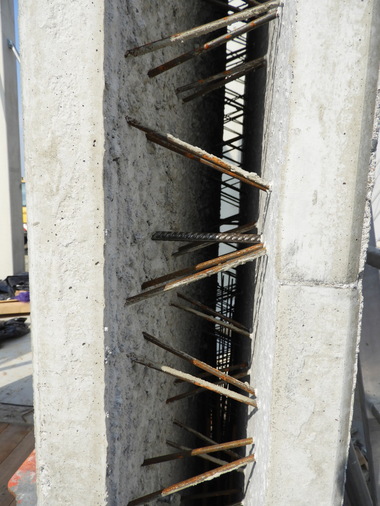Seminar series on precast walls as waterproof structure
In March, Filigran Trägersysteme GmbH & Co. KG organized a „floors and walls“ series of seminars. More than a total of 500 planners and staff members of precast factories participated in the seminars which were held on six dates in the cities of Cologne, Melle, Hamburg, Leipzig, Erlangen, and Munich. Main topic was the application of Filigran semi-precast walls with lattice girders built as waterproof structure.
The author of the technical book „Elementwände im drückenden Grundwasser“ (semi-precast walls in pressurized ground water), Prof. Dr.-Ing. Rainer Hohmann, gave a lecture on this subject. Due to his collaboration in the Code of Practice on „Waterproof Concrete Structures (WP Code of Practice)“ of the German Committee for Reinforced Concrete (DAfStb), he was able to explain the current amendments and to comment on them competently. The print version of the new WP Code of Practice with official issue date of December 2017 has been available since March 2018.
In respect of the semi-precast wall, Professor Hohmann emphasized two relevant changes: The requirement on the surface roughness inside of the precast panels has been increased. If, so far, a mean roughness depth of 0.9 mm had to be verified by the sand patch method, the new WP Code of Practice requires a value of 1.5 mm. This requirement corresponds to the verification of the load-bearing capacity for a rough joint in accordance with Eurocode 2. This subject was pointed out by Dr.-Ing. Johannes Furche of Filigran in a separate lecture. The required roughness of the untreated surface has to be ensured because in case of a semi-precast wall just the surface of the first shell can be roughened mechanically. Using previous comparative measurements, he demonstrated that five out of six semi-precast walls met the increased requirement even with untreated precast surfaces. Nevertheless, due to the large roughness depth, the manufactures will have to adjust the consistency, mix design, and compaction of the concrete purposefully in future.
Filigran design program revised
For semi-precast walls used as waterproof structure, both the old and the new code of practice stipulate a minimum wall thickness of 240 mm at a clear distance between the shells of 120 mm for the cast-in-situ concrete core. Although, according to the new code of practice, the clear distance between existing reinforcement layers in the cast-in-situ concrete also applies for an inner sealing. This regulation requires a larger wall thickness than 240 mm. Professor Hohmann mentioned the demand to eliminate the reinforcement in the perpendicular controlled crack joint between the precast elements. A single-row connection reinforcement, centrally arranged in the wall, should not be used in case of inner sealing, because it impedes the proper installation of the sealing. In his presentation on semi-precast walls, Dr. Furche also referred to the option of eliminating any connection reinforcement from the floor slab to the wall entirely. For walls without reinforcement, the horizontal supporting force can be transferred by a non-reinforced bond joint between floor slab and wall alone. In addition, he also presented design rules for reinforced walls, which allow the elimination of connection reinforcement in case of simply supported slabs. According to him, semi-precast walls with a thickness of 240 mm and inner sealing will still be possible in future, when making use of these options.
As third speaker, Dipl.-Ing. Ulrich Bauermeister of Filigran Trägersysteme GmbH & Co. KG explained the erection state of Filigran slabs. Tests using 40cm high Filigran EV lattice girders confirm potentially longer erection spans. The approval of lattice girder heights of 30 to 40 cm enables slab designs with lattice girder height alone even at slab thicknesses of more than 30 cm. So far, highly loaded floor slabs often required a combination of low girders for the erection state and high lattice girders as shear reinforcement. The associated Filigran design program is currently being revised in this respect. The new version will take the erection state using lattice girders with variable nodal points into account as well. A node distance diverging from 200 mm is of relevance when producing or using lattice girders with fixed lengths. A module for the verification of shear forces is also included in the current Filigran design program as well as a module for the punching shear verification of semi-precast slabs. The program is available at //www.filigran.de" target="_blank" >www.filigran.de:www.filigran.de free of charge.






